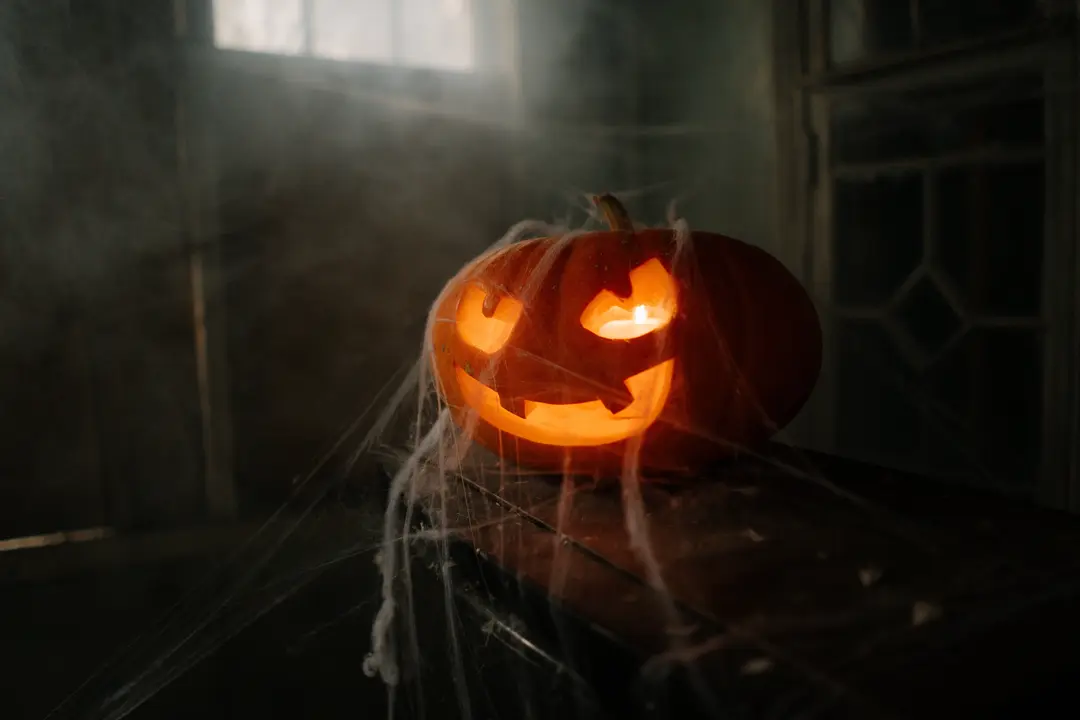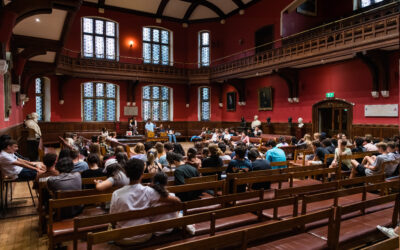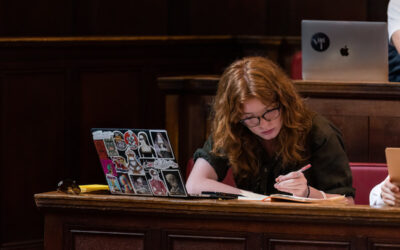Oxford may be famous for its academia, but did you know that it’s also believed to be one of the most haunted cities in the UK?
The unique and atmospheric charm of the city, with its winding lanes and medieval spires, has long been a source of inspiration for ghost stories and tales of the supernatural.
In celebration of the spooky season, we’ve put together a chilling collection of Oxford’s ghostly tales and spooky histories!
Is Oxford Haunted By Its History?
Given the city’s rich historical background, it comes as no surprise that Oxford has more than its fair share of ghostly residents! The iconic ancient architecture and centuries-old traditions commemorate a bygone era, and act as the perfect backdrop for all things strange and unsettling.
Oxford’s spectral legends have long contributed to its allure. Ghost stories pay tribute to some of Oxford’s famous (and infamous!) inhabitants, and spooky tales memorialise the city’s history of violence and intrigue.
What Secrets Does Oxford Hold?
With miles of narrow cobbled streets, clusters of medieval buildings and even mysterious hidden entrances, who knows what could be lurking in Oxford’s twists and turns after dark?
Maybe we’ll unearth some of these secrets as we explore the ghostly tales of the city…
Ghostly encounters in Oxford
Accounts of ghostly encounters are not a modern phenomenon. There have been tales of ghost sightings since medieval times, with some ghosts disappearing for centuries before reappearing to haunt the streets once more.
Here’s a collection of some of the most compelling ghostly encounters reported by Oxford residents and visitors alike:
The Oxford Phantom Carriages
There’s long been talk of phantom carriages drawn by spectral horses, clattering through the cobbled streets of Oxford. One particularly famous tale is that of George Napier and his coach.
George was a Jesuit priest executed in Oxford during the reign of Elizabeth I. His head is believed to have been displayed on Christ Church’s steeple, and his quarters on the four city gates.
It’s said that every Christmas Eve, George’s ghost drives a coach and horses from his hideout at Temple Farm manor house to Oxford in search of his long-lost head.
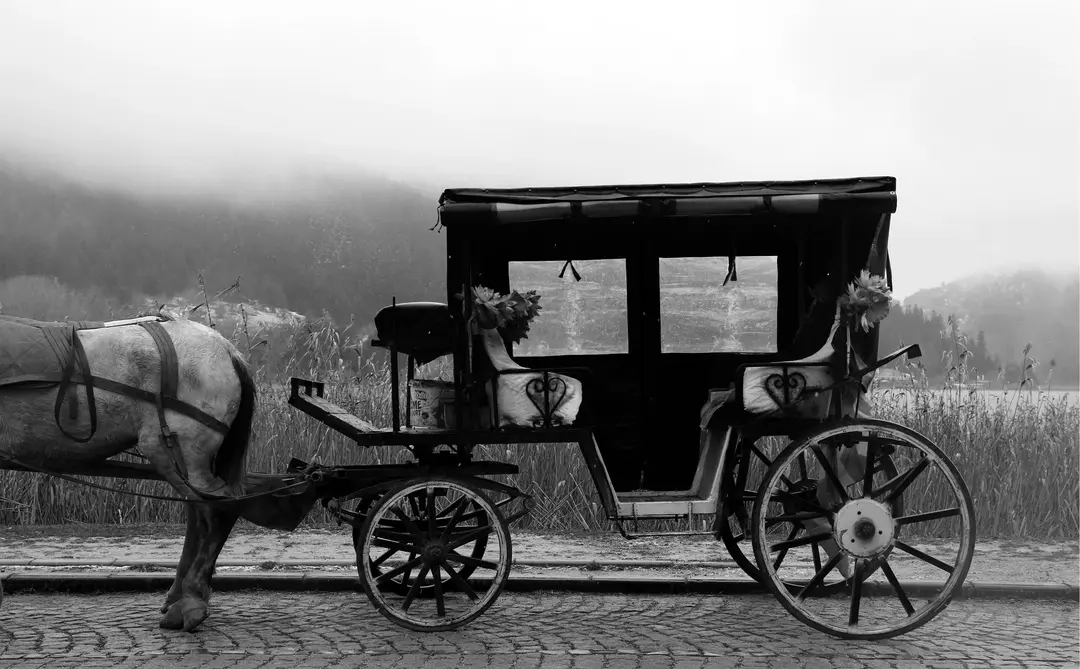
The Ghost of St. John’s College
Staff and students at St John’s college, University of Oxford have often claimed to have seen the ghostly figure of a scholar wandering the corridors. However, if this mysterious figure wasn’t enough, there’s an even more grisly presence haunting the college!
During the English Civil War, Archbishop William Laud, student and Fellow of St John’s, was arrested by Parliamentary forces and beheaded on grounds of treason. Laud’s body was later returned to St John’s and buried in the college chapel.
Since his burial, there’ve been multiple sightings of the archbishop’s ghost bowling his own head across the college library floor!

The Mysterious Apparition of Christ Church
Perhaps the University’s most famous college, Christ Church has not only hosted the witches and wizards of the Harry Potter movies in Oxford, but also a number of ghostly individuals.
Arguably the most important of these is the spectral presence of King Charles I!
During the Civil War, Charles defended Oxford as a strategic location, turning the Dean’s lodgings at Christ Church into his palace, and using the college Hall to hold sessions of counter-Parliament.
After he was executed in 1649, it’s believed that his spirit returned to his loyal city of Oxford, settling down in the halls of Christ Church.
Although Christ Church is the ghost’s main residence, it has also regularly been sighted in the Bodleian Library. It’s said that Charles roams the upper library at night, taking books from the shelves to read a single line before returning them, in an endless process of searching. This is widely interpreted as an act of rebellion, after Charles was denied permission to borrow books from the library during his waking life.
It’s also rumoured that his ghost now tears the pages of library books – although this is likely a convenient rumour for undergraduate students hoping to avoid library fines…
Oxford’s unsolved mysteries
Like any haunted city, Oxford is a city of secrets, full of unsolved mysteries from ancient curses to disappearances among its warren of lanes and college buildings.
The Curses of the Black Assize
The assize courts held at Oxford Castle in the summer of 1577 are believed to have suffered one of the deadliest curses in all of Oxford’s history.
On trial was a bookseller named Rowland Jenkes. As punishment for speaking treason against Queen Elizabeth I, Jenkes was sentenced to be nailed to the pillory by his ears – or have his ears cut off entirely! As he was led out, Jenkes cursed the court, calling down a fatal sickness on those who heard him.
That summer at least 300 male citizens of Oxford died of an unknown illness whilst women, children and other prisoners at the castle were mysteriously unaffected. The survival of Jenkes and the other prisoners – typically at high risk of contracting infectious diseases due to unsanitary prison conditions – fuels the rumours that there was something more sinister at play than a simple illness…
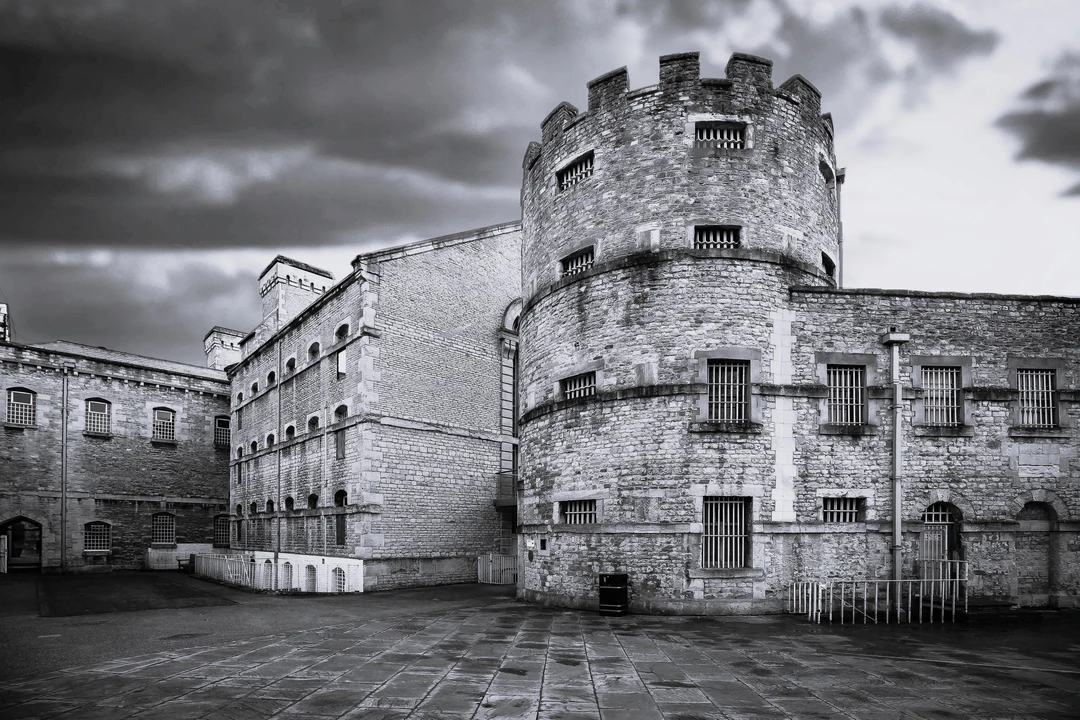
Spooky scandals of Oxford
From its medieval beginnings to its modern reputation, there’s been plenty of time for Oxford to be rocked by scandal.
However, the academic presence of the University of Oxford has added a particularly unusual flavour to many of these tall tales and unlikely events.
Oxfordshire Witch Hunts
Like all major cities in England, Oxford was swept up in the seventeenth century witch craze.
The accession of James I to the throne in 1603 issued in a period of intense panic and suspicion, the (literal) flames fanned by the king’s own fascination and fear of demonic magic.
Suspected witches from the Oxfordshire area were brought to the city to determine the presence of witchcraft. One of the favoured methods of testing was to tie a woman’s left thumb to her right toe and then toss her into a body of water to test if she would float. The deep moat of Oxford’s castle prison was perfect for this kind of trial.
One of the most famous trials in Oxford was that of Elizabeth Gregory, Agnes Pepwell and her daughter Mary Pepwell. When Anne Gunter, a 14-year-old girl from South Oxfordshire, began to experience seizures, she would speak of the three women, accusing them of witchcraft.
Suspicious events continued to add to the case against the women. Anne’s condition worsened, and there were claims of pins sprouting from her body. Local priests and scholars who came to investigate could find no cause for this other than witchcraft.
The three “witches” were imprisoned. Agnes admitted to practising witchcraft, implicating the other two women in the process, although it’s unknown if this was a willing confession.
A man by the name of Thomas Hinton soon became interested in the case. He visited the Gunters, and on discovering pins scattered around the house, managed to prove that Anne’s symptoms were in fact a sham. Anne’s father was found guilty of falsely accusing and framing his neighbours.
Other Oxfordshire “witches” were believed to possess shape-shifting abilities. As late as the twentieth century, local huntsmen complained of an unusually beautiful vixen they were unable to catch. The only time they came close to catching the vixen, it ran into the cottage of a suspected witch. On entering the cottage, they found only the woman sitting by the fire, out of breath as though she had been running…
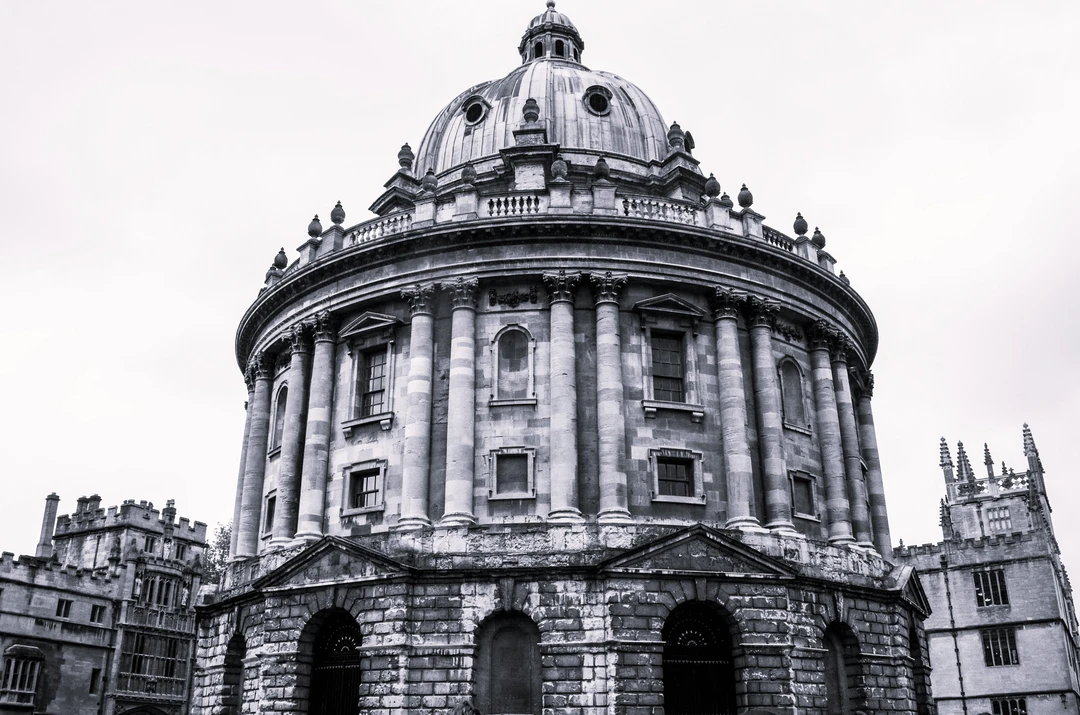
The Bodleian Library Book Theft Scandal
There’s a joke among antiquarians that every rare book has been stolen at least once, and the rare books of Oxford’s Bodleian Library are no exception.
In 2001, approximately 30 rare seventeenth-century theology books were stolen from the Bodleian, amounting to a value of around £20,000. The case puzzled librarians and police alike; as the books were almost four times the size of a modern paperback, they were likely taken over the course of several months. As the books were only available on request, it’s generally believed that the thieves masqueraded as theology students and smuggled the books out under their clothing. Unfortunately, the books have yet to be recovered.
In 2009, wealthy businessman Farhad Hakimzadeh was arrested for stealing pages from approximately 150 rare and priceless books at both the British Library and the Bodleian.
Hakimzadeh would smuggle a scalpel into the libraries, cut leaves from the books and then insert them into copies of the same book in his personal library. His crimes in Oxford dated back to 2003, where he defaced works from as early as the sixteenth century!
Secrets of the occult in Oxford
Students and scholars at Oxford have long been famed for their interest in anything and everything, including the supernatural! The city has hosted many famous occultists and encounters with the “other side”…
John Dee, the Alchemist of Oxford
One of Oxford’s most famous historical inhabitants is John Dee (1527-1609). A renowned mathematician, astronomer, astrologer, teacher, occultist and alchemist, he was the court astronomer to Elizabeth I and often referred to as the “Queen’s Conjurer”.
Dee spent his time in Oxford studying alchemy and divination, leading him to employ a personal scryer (crystal-gazer) in later life. The scryer acted as an intermediary between Dee and angels he sought contact with. It’s said that these angels dictated several books to the astronomer.
This pursuit took Dee as far afield as the royal court of Poland, and the pair were highly famous among the monarchies of Eastern Europe. Dee has come to be known as a famous sorcerer – he’s even thought to be the inspiration for the powerful sorcerer Prospero in Shakespeare’s The Tempest.
The British museum holds several of Dee’s personal artefacts, including a crystal ball, an Aztec obsidian mirror, and “charmed” wax seals. These items had previously been displayed at Oxford’s Ashmolean museum, whose founder, Elias Ashmole, was fascinated by Dee and conducted his own experiments in the occult.
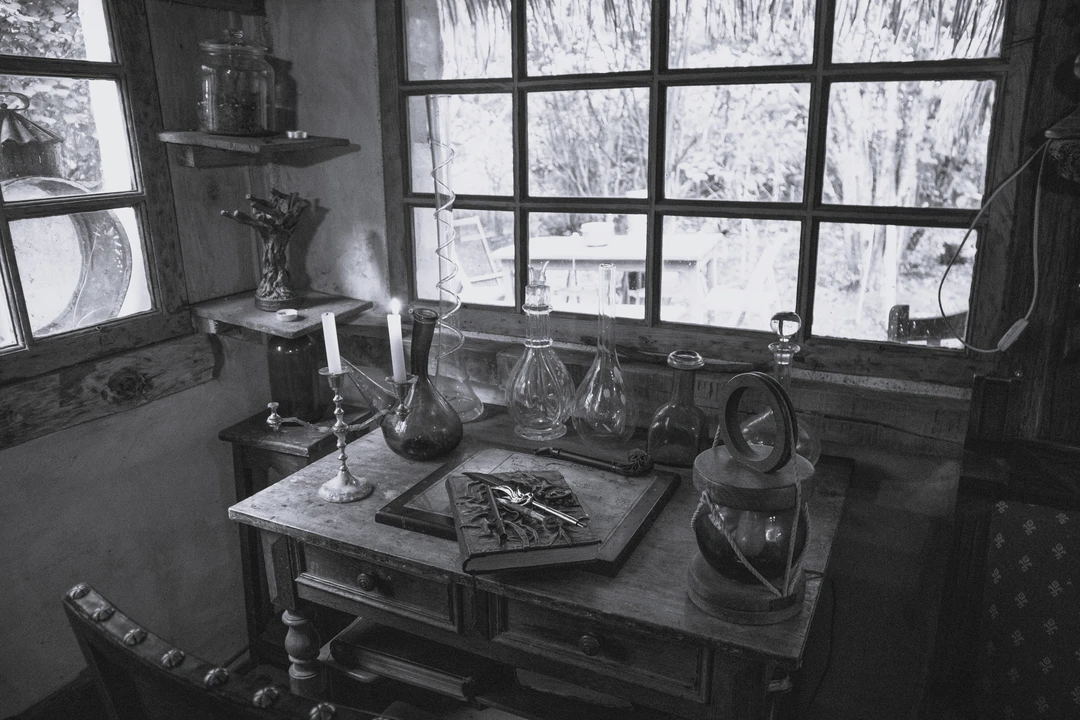
The Oxford Golden Dawn Occult Society
Interest in the occult is still alive and well in Oxford today! It’s strongly represented in the members of the Oxford Golden Dawn Occult Society (OGDOS). The OGDOS practises a modern version of the Golden Dawn system, based on the nineteenth-century study and practice of occult Hermeticism and metaphysics.
The society is less secretive than the original Golden Dawn, holding public workshops and lectures on all things occult, from magic to shamanism. Many of the members practise Neo-Pagan and Wicca traditions, and their meetings often involve various rituals on an experimental basis.
Are There Really Ghosts in Oxford?
Despite the stories, there probably aren’t real ghosts in Oxford – or at least none that can be proven so far! However, the stories and myths have influenced literature and film in a big way.
Ghostly legends in literature and film
Whether it be as the home of magic in Phillip Pullman’s His Dark Materials series, or as a secret city controlled by a sinister otherworldly race in Samantha Shannon’s The Bone Season, Oxford is the perfect setting for writers exploring the edges of the known realm!
The eerie streets have made Oxford most famous as a setting for crime novels, from Colin Dexter’s Inspector Morse series to Edmund Crispin’s The Moving Toyshop.
Unsurprisingly, film and TV directors have also been captivated by Oxford’s unsettling history. The supernatural horror film The Quiet Ones follows a University of Oxford professor whose experiments take a sinister turn.
In A Discovery of Witches, witchcraft in Oxford is alive and well when a historian discovers a bewitched manuscript in the Bodleian Library.
And of course, it’s hard to forget that the most famous witches and wizards in the world walked the streets of Oxford in the Harry Potter movies!
With this rich heritage as a backdrop for the dangerous and supernatural, it’s not surprising that Oxford is a popular location for those seeking magic or a spooky adventure.
Ghost tours and guided walks
The city’s haunted past draws in thousands of thrill-seeking visitors each year. “Dark tourism” is a major contributor to the local economy and cultural heritage of Oxford and continues to reinforce Oxford’s unique identity as a ghost city.
Some of the most popular attractions are Oxford’s ghost tours. These guided walks take visitors through Oxford’s haunted locations, including the infamous Magpie Lane, said to be haunted by the ghost of Prudence Burcote, a woman who fell in love with the wrong man, and dying of a broken heart, continues to wait for him on Magpie Lane…
Other attractions include the site where the Oxford Martyrs were burned at the stake, and Dead Man’s Walk where the ghosts of Civil War soldiers still march.
Oxford’s enduring legacy of ghost stories, unsolved mysteries, scandals and occult past continue to intrigue, inspire and captivate both locals and visitors alike.
The telling and retelling of these stories is enough to inspire anyone’s creative side, and there’s always room for more legends, so why not try your own take on these ghost stories and supernatural tales?

By Alice Spiers
Alice is an historian at St Anne’s College, Oxford, where she teaches undergraduate history (predominantly medieval history and historiographical theory). She is also a freelance writer and editor, and a research assistant at the Leverhulme Centre for Demographic Studies.

